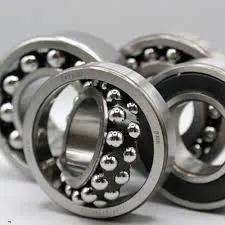
Nov . 10, 2024 02:14 Back to list
Exploring the Characteristics and Applications of 32012 Bearing Types
Understanding the 32012 Bearing Specifications and Applications
Bearings are crucial components in numerous mechanical systems, serving as a means to reduce friction between moving parts and enhance the efficiency of machinery. Among various types of bearings, the 32012 bearing stands out due to its unique specifications and broad applications in industries such as automotive, manufacturing, and aerospace. In this article, we will explore the features, specifications, and applications of the 32012 bearing.
Specifications of the 32012 Bearing
The 32012 bearing is a tapered roller bearing, characterized by its conical rollers. These rollers are designed to provide high load-carrying capacity and accommodate both radial and axial loads. The designation 32012 follows the ISO bearing numbering system, where each part of the code reveals essential information about the bearing's dimensions and construction.
1. Dimensions The 32012 bearing has an inner diameter of 60 mm, an outer diameter of 95 mm, and a width of 23 mm. The tapered design of these bearings allows for a linear contact between the rollers and the raceways, which improves efficiency and reduces wear. 2. Load Capacity Tapered roller bearings, such as the 32012, have a high load-carrying capability due to their design. They can handle both radial and thrust loads, making them suitable for various operating conditions. The basic dynamic load rating for the 32012 bearing is approximately 56 kN, while the static load rating is around 71 kN, which indicates its robustness under heavy loads.
3. Material and Construction The 32012 bearing is typically made from high carbon chromium steel, ensuring excellent hardness and durability. The surface treatment often includes applying a special coating to enhance corrosion resistance and reduce the risk of pitting under high stress.
Applications of the 32012 Bearing
32012 bearing

The versatility of the 32012 bearing makes it a favored choice in several industrial applications. Here are a few notable examples
1. Automotive Industry In the automotive sector, the 32012 bearing is commonly used in wheel hubs, gearbox assemblies, and differential gears. The ability to handle both radial and axial loads is particularly valuable in automotive applications where weight distribution and power transfer are critical.
2. Industrial Machinery This bearing type is extensively used in various machinery, such as conveyor systems, cranes, and fabrication equipment. Its design allows for the efficient movement of heavy loads while maintaining reliability and performance.
3. Aerospace Applications In the aerospace industry, the 32012 bearing is utilized in applications requiring high precision and reliability, such as landing gear and engine components. The need for lightweight and high-strength materials makes the tapered roller design an excellent fit for this sector.
4. Railways The 32012 bearing is also employed in the railway industry, particularly in axle assemblies and bogies. Its ability to withstand combined loads and dynamic forces is essential for ensuring the safe and smooth operation of trains.
Conclusion
The 32012 bearing exemplifies the critical role that bearings play in the functionality of various mechanical systems. With its robust design, ability to handle high loads, and versatility in applications, it continues to be a preferred choice across multiple industries. Understanding the specifications and applications of the 32012 bearing not only aids engineers and designers in selecting the right components but also optimizes machinery performance and longevity. As technology evolves, bearings like the 32012 will undoubtedly remain integral to the innovation and efficiency of mechanical systems.
Latest news
-
Grooved Ball Bearing Design and Functionality
NewsJun.04,2025
-
Concrete Mixer Bearing Load Capacity Testing
NewsJun.04,2025
-
6004 Bearing Dimensions in Robotic Joint Designs
NewsJun.04,2025
-
Advantages of Single-Row Deep Groove Ball Bearings
NewsJun.04,2025
-
Applications of Deep Groove Ball Bearings in Automotive Systems
NewsJun.04,2025
-
Innovations in Bearing Pressing Machine Design
NewsJun.04,2025
